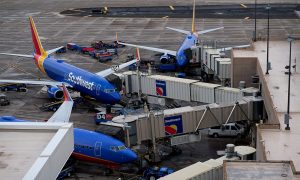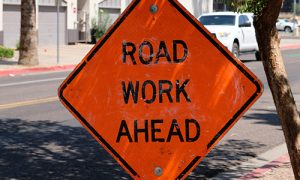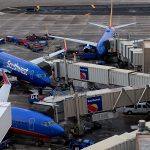Your job as an airline/rail/transportation writer is to make sense of the business of moving people from place to place.
It’s a beautiful thing when it works. When it doesn’t, the failures are out there for all to see. And that’s what makes this beat so much fun – that very little of how it runs is secret.
This makes your readers, listeners and viewers self-appointed experts. They will keep you on your toes. You may not be able to be on the story before your readers are, so you need to understand it better.
Here are some of the basic building blocks of smart business coverage of transportation:
Understanding the economic forces
Travel is one of the sectors most sensitive to the health of the economy. When businesses are struggling, one of the first things they cut is travel. Teleconferencing is an increasingly viable alternative to travel as technology improves. When households struggle with their budgets, they may stick close to home on vacation or not go on vacation at all. There is little the airlines can do to stimulate travel except cut prices, which they do with the thought that getting some revenue for a seat is better than none at all. But filling a cross-country flight with people paying $198 a head does little good, either. Understanding cost components is critical as well. The big two are labor and fuel. Jet fuel prices are more volatile than gasoline prices. And because travel businesses are extraordinarily capital-intensive – nobody can pay for new jets out of petty cash, after all – interest rates and the debt marketplace play huge roles in these companies’ fortunes.
Following the money
The way airlines set prices is so complex that they must employ some of the world’s most powerful computers to keep it all straight. This system, known as yield management, explains why someone booking a flight a month from New York to Los Angeles a month in advance might pay as little as $300 roundtrip while someone flying from Boston to Augusta, Maine, on two days’ notice might pay thatAs with any business beat, a basic grounding in revenue, profits, and balance sheets is essential. Travel has its own financial benchmarks as well. The amount of money they take in per widget must exceed their costs of making that widget. In this case, the widget is one passenger traveling one mile (a passenger mile).
much one way. Yield management is, as its core, the science of extracting the most money out of customers based on their willingness (or need) to fly. You may never make sense of yield management, but it’s essential to understand its principles.
Knowing the equipment
Educate yourself on the hardware your companies use – whether it is a Cessna, a Boeing 737 or a General Electric locomotive. Become familiar with their principles of motions, their performance limits, their parts, their most common areas of breakdown.
Knowing the people
The tools of front-line transportation industry jobs have changed over the years, but the tasks are remarkably little changed from a generation ago. Get to know the duties not just of pilots, flight attendants and mechanics, but dispatchers, schedulers, gate agents and ground crews – the people who really make a transportation system run.
Understand the service expectations
As recently as a decade ago, sandwiches were served to passengers on domestic flights of 90 minutes. Now, soft drinks, peanuts, even blankets and pillows have been sacrificed to the bean counters. That being said, the airlines’ ability to get you to your destination on time, to get your bags there along with you, and not bump you off a flight for which you have a confirmed reservation is monitored by the federal government, holding the airlines to a standard of avoiding embarrassment.
Regulation
Travel remains one of the most regulated segments of the U.S. economy – so regulated, in fact, that oversight can be overlapping, conflicted or vague. For example, the National Transportation Safety Board, despite its name, does not regulate safety. Its role is limited to investigations, research and recommendations. It has no power to enact anything – as told powerfully last fall by a News21 student journalism project chronicling how the Federal Aviation Administration has ignored hundreds of NTSB recommendations over many years. The railroad industry has separate regulators for safety and economic issues and Amtrak, while supported by taxpayer dollars, is an independent government-chartered corporation. Trucking and bus operators and shipping lines have their own regulators. States or local authorities operate airports under federal supervision. Understand who regulates what, and what powers they do and don’t have.











